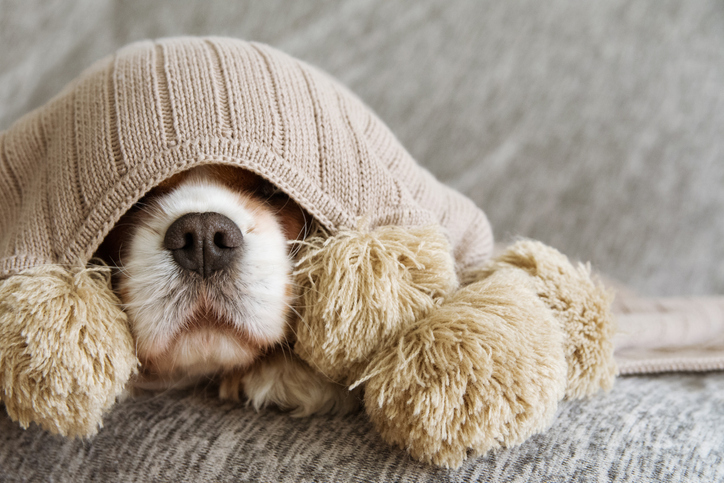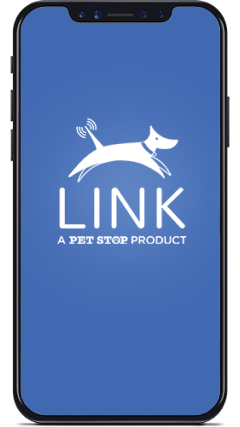Puppy-Proofing Your Home:101

By Kelley Kombrinck
For animal lovers, there are few things as exciting and rewarding as bringing home a new puppy or young dog. Their energy is infectious, and they are cuddly, loving, and full of joy. They are also new to this world and to your home specifically and don’t know what things might not be good or safe for themselves. You can maybe supervise them most of the time, but not all of the time and so it’s important to take steps to ensure that your environment is as safe as possible for your new little critter to roam around and explore. There are a lot of hazards in every home that can get your puppy into trouble. Food items, electrical items, toys—all these potential areas of concern should be identified and then resolved before your new friend goes looking through their new abode.
Identify Problem Areas

Before getting started on puppy proofing your home it may be worthwhile to get a clearer view of what your pet’s world looks like. It may feel a bit silly but try getting down on your hands and knees and wandering through and around the rooms that your new dog will have access to. Poke around behind and under furniture. Check out your kitchen, bathroom, and bedrooms from this dog’s eye view. This will give you a good idea of how your pup will experience their environment and you might find some issue you hadn’t previously realized could be a danger to a young dog.
Cables and Cords
Puppies and young dogs are naturally very curious. They want to check out everything in their territory and get to know the lay of the land. In addition to using their eyes, ears, and nose, dogs interact with their world by using their mouths. They are very sensitive and dogs chew and lightly nibble things to get a sense of what they are. In addition, they all enjoy chewing, especially very young puppies who may be teething.
Electrical wires and cords are particularly tempting for young dogs. They love to chew and tug on ropes and strings and these cables just seem like more good things to get their teeth on. Obviously, that is something we don’t want them doing because they could receive a very dangerous electrical shock chewing through an active, plugged in cable.
Go through and make sure that any cords that are plugged in are either blocked by items in the room that the puppy can definitely not get over, under or around (heavy furniture that they can’t push around is often a great barrier). For plugs that are not in an area conducive to blocking, there are “pet-proof” cord protectors that are durable enough to hold up to chewing while protecting your puppy from the actual cables within (and protect them from your pup).
Small Items/Kids’ Toys
The same curiosity that causes your puppy to want to chew on electrical cords also inspires them to pick up anything they may find on the floor that they can lift with their mouths. If you have children, make sure any small toys (smaller than your fist is a good way to measure what is “small”) are picked up and out of reach of your puppy. Many such toys have small plastic parts that your dog could swallow and choke on, and they often have sharp points and edges that can hurt the inside of a dog’s mouth.
As for your dog’s toys and playthings, your dog’s jaw size and teeth will determine what size toy is safe. Many toys have recommendations for dog sizes in their descriptions, but always keep in mind your dog’s unique size. For smaller dogs, aim for a toy that won’t strain their mouths, and for larger dogs, make sure toys aren’t small enough to choke them.

Food
In our March 20, 2021, blog (which you can check out HERE) we talked about the foods dogs can’t eat. We know not to deliberately feed our dogs things like chocolate, garlic, or onions, but puppies get into everything. With a young, curious canine sniffing through the house for what seem like nommy morsels, it is imperative to make sure you have foods put away in containers out of your dog’s reach. You also want to make sure while preparing meals that food on your kitchen counters is pushed well back from your puppy’s grabbing range. Another caveat for homes with young children and teens–periodically check floors where the kids commonly snack to hunt for stray candies that may have been dropped and forgotten.
Medicines/Chemicals and Garbage
Something that can be even more toxic to a dog than human food is human medicine. Keep your prescriptions and over-the-counter remedies shut in a cabinet well out of reach of your dog. If you are taking medicine and drop a pill or spill liquid, pick it up or clean it immediately.
Similarly, household cleaning supplies and chemicals can be extremely hazardous to animals, whether they’ve ingested them or even just gotten them on their fur or skin. Of course, these items can be bad for us humans too and hopefully we keep those in a secure place where kids and pets can get to them
Unfortunately, even if you’ve cleaned up and put all your items away where only opposable thumbs can reach, there is one place your dog can go to find any and all of these problem items and then some. This would be your garbage bin. Ideally you would want to keep your trash in a cabinet or closed room. This isn’t always possible however, so if you can’t put your trash receptacle in a place it can’t be reached by your pet, make sure it is of a height that it can’t be gotten into by sniffing snoots, or it has a pet-proof lid.
Thinking about the possible dangers that lay in wait for your new puppy pal may induce anxiety, but the good news is that most of these things can be dealt with simply and easily with common sense and a simple decluttering. If you think of them the same way you’d think of a toddler that was coming to stay with you and prepare accordingly, your new little friend will enjoy a very safe and welcoming environment.

 Pet Stop
Pet Stop Get a Free Quote
Connect with Your Local Pet Safety Experts at Pet Stop. Visit, call, or
chat with us – we’re here to help you create the ultimate safe haven for your pet.
Get a Free quote
Name *
Zip code where new fence is required *
Preferred contact method *
Phone Number to Call/Text *
Address *
Stay Connected, Stay in Control
Brief introduction to the OT-300, highlighting remote control, real-time notifications, and easy setup through the Pet Stop Link App.
Download the App